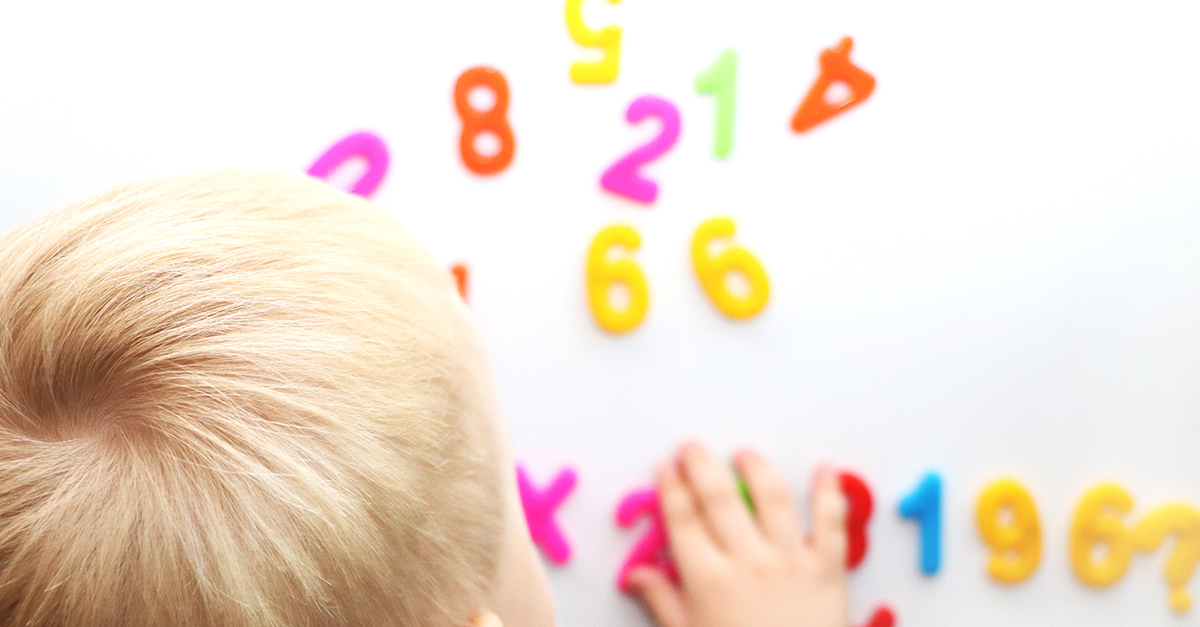Introduce Children to Numbers Easily with These 8 Math Activities

Numbers and counting are naturally a part of your child’s day. From counting his toes to saying, “one, two, three, go!” while playing in the yard, he is already observing and gathering information about numbers. Math is another avenue for your preschooler to understand and make sense of his world. Learning opportunities that incorporate play and discovery within a meaningful context will help your child to engage with math and develop a positive attitude toward it. The concept of numeracy is an easy and practical place to begin.
Below are some simple math activities that will help teach the names of numbers, what they look like, how to count them in order, as well as matching a written number to a quantity. All these skills are precursors to the more advanced math concepts he will encounter later in his learning of mathematics.
Simple Math Activities
Count As You Go
Count as you walk up the steps, eat berries, pick up sticks, put away blocks, or brush teeth.
Songs and Rhymes
Songs and rhymes that incorporate numbers such as Ten in the Bed, Five Little Ducks, The Ants Go Marching, Counting Bananas, and Five Little Monkeys introduce the concept of counting up or down.
Domino Dot Game
Write the numbers zero through twelve in order on a sheet of paper. Have your preschooler select a domino, count all the dots, and then circle the corresponding number. Play until he has found all the numbers. If he counts the same number more than once, have him point to the number.
Read Counting Books
Read counting books together. Encourage your child to say aloud the numeral on each page and then count the objects on the page with you by touching each picture as he counts.
One, Two, Three, Go!
This game requires two players, a sheet of paper with the numbers 0-10 written on it, and a pencil. It is played like the Rock, Paper, Scissors game except that you say, “One, Two, Three, Go!” at which time each player holds up as many fingers on one hand that he chooses. Then have your preschooler count all the fingers that show. Next, have him point to the number written on the sheet of paper.
Numbers around the House
Write numbers on small round stickers and together label items around the house. For example, put the number 12 on an egg carton to show a dozen eggs, 2 on a pair of socks, 6 on a bowl with six apples in it, etc.
Number Spies
Go out for a walk to look for numbers on mailboxes, doorways, and signs. Take turns pointing them out. For a fun twist, add on a counting rule. Once a number is called, count up to that number by counting items that you see, such as trees, cars, telephone poles, people, or animals.
Munching Numbers
Write the numbers one through 12 on the bottom of paper muffin liners and place them in a muffin tin; alternately, wash and label the compartments in an empty egg carton. Have your child count out the right number of small crackers, pretzels, cereal pieces, or fruit into each cup. As an extra challenge have him try counting backward as he eats and each piece disappears one at a time. This activity can also be done with other safe, age-appropriate items to count such as cotton balls, pebbles, craft pom poms, small erasers, or dry pasta.
When introducing numbers to preschoolers, keep in mind that each child learns and develops at his own pace. Some children will catch on quickly while others may need more time. Repetition is important when introducing numbers and counting. Children who are actively engaged and exposed to numbers in a variety of ways will develop a better understanding of math because they have been given time to explore, discover, and make connections.